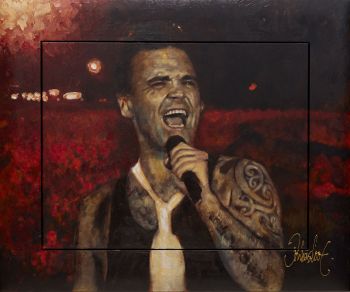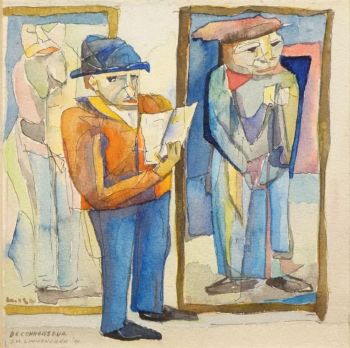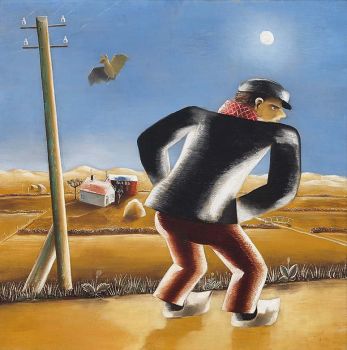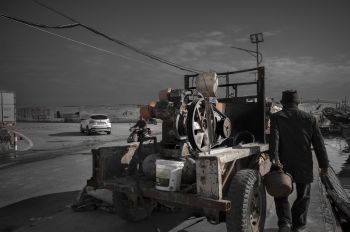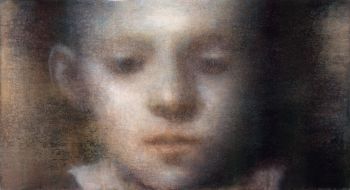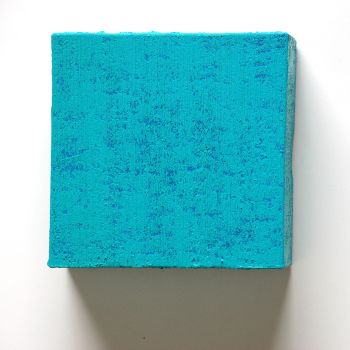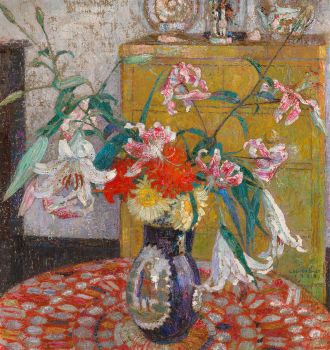Two woman doing the laundry 1905
Otto van Rees
Pittura a olioDipingere
43 ⨯ 52 cm
ConditionExcellent
Prezzo su richiesta
Studio 2000 Art Gallery
- A proposito di opere d'arteOil on canvas
43 x 52 cm.
Signed: lower left ‘OvR’
Particularities: ID 35.
Provenance: Acquired directly from the artist by Han Coray, Switzerland; Private collection, Swiss; Auct. Christie’s, Amsterdam, 17 june 2014, Lot. no. 19.; Private collection, The Netherlands.
Exhibited: Rotterdam, Kunsthandel Oldenzeel, Tentoonstelling van Schilderijen door Otto van Rees en van Schetsen en Studies door David Oyens, 14 May - 17 June 1908, no. 29/30.
Zürich, Galerie Tanner, Otto van Rees, Paris/Hans Arp/A.C. van Rees-Dutilh, Paris, Moderne Wand-Teppiche, Stickereien Malereien, Zeichnungen, 14 - 30 November 1915, no. 21; Utrecht, Centraal Museum/The Hague, Gemeentemuseum, Otto en Adya van Rees. Leven en werk tot 1934, 30 April - 24 August 1975, no. 16 (ill.). Ascona, Museo Communale d'Arte Moderna, Otto van Rees. 1884-1957, 17 September - 30 October 1994, no. 8 (ill.); This work is included in the archive of the Van Rees Stichting number: ID 35.
Literature: Faasen, Egbert en Sjoerd, Grijns, Laura, Lesparre Irène, Raad, Jaqueline de, Otto van Rees, Waanders Uitgevers, Zwolle Van Rees Stichting, De Bilt, afb. p. 74 en p. 297; Ida Boelema, Irène Lesparre (ed.), Otto van Rees, Zwolle 2005, no. 15 (ill.). - A proposito di opere artista
Otto van Rees era un artista olandese di Friburgo, in Germania, cresciuto in una famiglia impegnata politicamente e socialista. Suo padre fondò una colonia idealistica a Blaricum nel 1899, ispirata da scrittori e filosofi come Leo Tolstoj, che aveva un forte legame con i vegetariani di Ascona, in Svizzera. Quindi, Van Rees è cresciuto in un ambiente pieno di artisti, filosofi e anarchici. Fu istruito dai pittori Jan Toorop e Herman Heijenbrock e lavorò nello stile del luminismo nel suo primo periodo. Van Rees si recò a Parigi nel 1904 su raccomandazione di Jan Toorop. Presto avrebbe incontrato George Braque, Pablo Picasso e Kees van Dongen, con cui avrebbe fatto amicizia. Van Dongen e Van Rees lavoreranno insieme in uno stile neoimpressionista, tendente al fauvismo dopo un viaggio in Italia nel 1905. Le sue opere iniziarono a tendere più all'astratto, probabilmente influenzate da Braque, che lo portò a partecipare a mostre cubiste a Parigi e Berlino insieme a Piet Mondriaan, Fernand Léger e Henri Le Fauconnier intorno al 1912. Nel 1915, Van Rees espose con Hans Arp a Zurigo, che è vista come una delle prime espressioni del dadaismo. Gli orrori della prima guerra mondiale hanno avuto un impatto sul lavoro di Otto, portando a temi religiosi. Verso la fine della sua carriera, Otto si trasferì a Bergen e in molti altri villaggi olandesi e belgi e iniziò a lavorare in modo più figurativo rispetto a prima, creando rappresentazioni religiose, nature morte e ritratti. Ha continuato a viaggiare in tutta Europa fino alla sua morte. È considerato una persona importante nella storia dell'arte olandese, a causa della sua vasta rete tra le avanguardie europee nella prima metà del XX secolo.
Sei interessato ad acquistare questa opera d'arte?
Artwork details
Related artworks
Otto van Rees
Het atelier van de kunstenaar in Parijs (1918)1918
Prezzo su richiestaKunsthandel Pygmalion
1 - 3 / 3Joseph Savart
Four portraits of women of Guadeloupe1769
Prezzo su richiestaZebregs & Röell - Fine Art - Antiques
 A cura di
A cura diDanny Bree
Jan Toorop
NETTENBOETSTERS IN DE SCHADUW VAN EEN BOMSCHUIT1891
Prezzo su richiestaStudio 2000 Art Gallery
1 - 4 / 24Johannes Evert Akkeringa
'Nettenboetsters' in the Dunes1861 - 1942
Prezzo su richiestaStudio 2000 Art Gallery
1 - 4 / 24Roman & Henriëtte Reisinger
Tulips still life in glass jar2020
Prezzo su richiestaAtelier/ Galerie H&R Reisinger
H.J. van der Weele
Horse and carriage in landscape1850 - 1900
Prezzo su richiestaKunsthandel Pygmalion
1 - 4 / 24Raoul Hynckes
"Still Life with Fishing Attributes"1940 - 1950
Prezzo su richiestaStudio 2000 Art Gallery
1 - 4 / 12





